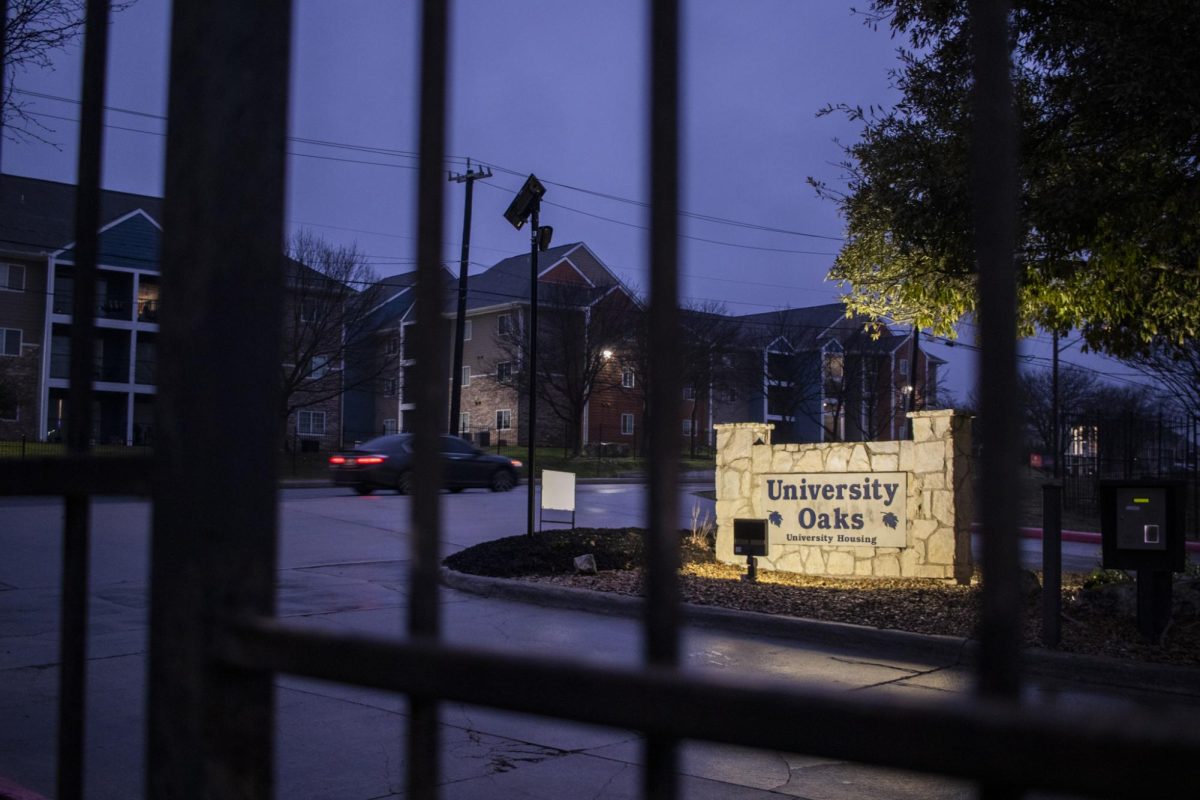Although it may be hard to notice all the way from San Antonio, big things could be in store for UTSA as the Legislature meets in Austin this spring.
Higher education is high on the agenda of many legislators. From tuition prices to construction projects, what happens in Austin over the next few weeks will likely have a huge impact on what happens at UTSA in the months and years to come.
Tuition Revenue Bonds
Albert Carrisalez, UTSA’s Director of External Affairs, said that the highest priority for UTSA in the upcoming session will be Tuition Revenue Bonds (TRBs).
Traditionally, the Texas Legislature would pass a new TRB bill every four years authorizing the construction of new buildings at universities around the state. However, no such bill has been authorized and signed since 2006, when UTSA was given sufficient funding to break ground on the AET Building.
“Every Rep and Senator last year backed the tuition revenue bonds,” Representative Donna Howard, D-Austin, said in the Austin Chronicle, going on to blame the inactivity on “political fumbling at the last minute.”
This year, UTSA is seeking $95 million to build a new Instructional Science and Engineering (ISE) Building, as well as $42.5 million to renovate the outdated labs at the 39-year-old Flawn Science Building. According to UTSA Today, “the ICE Building would add 175,000 square feet for instructional laboratories and classrooms, STEM (science, technology, engineering and math) education and research and support programs that enhance teaching skills of students preparing for careers in science instruction at K-12 institutions.”
According to Carrisalez, unlike many public universities in Texas, UTSA has plenty of land for new building projects. However, Carrisalez stated that, because it is a younger university it is much harder for UTSA to secure the necessary funding for new construction projects. As a result, there is a surplus of students trying to fit into a limited amount of space.
In conjunction with the proposed ICE Building, the renovations at the Flawn Science Building would help enable UTSA to become a more research-based institution. The new labs at the proposed ICE Building would allow the “adaptive reuse” of the Flawn Building, according to UTSA Today.
In short, if the legislature approves UTSA’s proposed $137.5 million in construction projects, UTSA would likely move much of its science operations from the obsolete Flawn Building into a newer, state-of-the-art facility, allowing the university to repurpose the Flawn Building for whatever needs may arise.
Currently, there are several bills being proposed in the Legislature that would permit the use of tuition revenue bonds, including SB 21, which was introduced by Judith Zaffirini, D-Laredo, who is part of Bexar County’s delegation at the Capitol.
Hazelwood
UTSA will also be seeking relief from the Hazelwood Act, which allows military veterans to attend college in Texas free of tuition. Because of the Hazelwood Act — which was expanded in 2009 to include coverage for military families — UTSA will forego more than $10 million for fiscal year 2013-2014 and is expected to forego an additional $11.2 million for fiscal year 2014-2015.
Carrisalez pointed out that the majority of the students who enroll with a Hazelwood exemption are not veterans, but rather their family members. Veterans, he noted, are more likely to take advantage of programs such as the G.I. Bill.
Currently, over 1,000 students at UTSA do not pay tuition as a result of the Hazelwood Act.
Carrisalez noted that the Hazelwood exemption hurts UTSA more than any other school in the UT System, and that the university is currently leading the charge to seek relief from the Legislature. Although UTSA is proud to serve veterans and their families, Carrisalez said, the cost of the program should be the burden of the Legislature, not the universities.
To provide free tuition to so many students, Carrisalez said, the university must recoup the lost funds elsewhere to supplant the lost funds, resulting in higher prices for things like parking, food or student fees.
Tuition
Tuition is one place that has seen dramatic price increases in recent years.
In 2003, the Legislature voted to deregulate tuition and allow public universities to determine the cost of attendance. Free from tuition caps, board members were given the authority to raise and lower rates in accordance to course levels, programs and semesters. As a result, tuition prices have risen substantially since its application.
For example, according to the Texas Higher Education Coordinating Board database, tuition and fees at UTSA during the 2013 fall semester for a resident undergraduate student enrolled in 15 semester credit hours were about $4,527. However, during the 2003 fall semester tuition and fees were $2,222 for the same resident undergraduate student. This increase is a reflection of the legislative deregulation of tuition rates.
“I think the Legislature has a responsibility to consider whether the deregulation policies enacted over a decade ago still make sense for Texas students,” Senator Charles Schertner, R-Georgetown, said in a statement.
In an effort to maintain tuition rates in public Texas universities, Schertner has filed a bill that will restrain institutional regulation of fees. Senate Bill 233 will cap tuition and fees at their current level and only be subject to change in correspondence to inflation rates. The proposed bill will allow incoming students and their families to develop financial strategies around a tuition that will remain predictable throughout their college career. Additionally, Schertner has submitted Senate Bill 232 which will alleviate the sales tax of textbooks during the start of the fall and spring semesters.
With national student loans at an all-time high, “attending one of our world-class public universities shouldn’t be a luxury afforded only to the wealthy or those willing to mortgage their futures by assuming massive student debt.” said Schertner.
The decision to discontinue deregulation has seen bipartisan support in the Senate. Democratic Senator Rodney Ellis of Houston has argued the decision of legislative deregulation since its inspection.
“(Deregulation) is pricing hard-working families out of higher education, forcing students who are able to attend to work, graduate with enormous debt loads, and push back their graduation and eventual entrance into the full time workforce,” Ellis said in a statement. “The people of Texas send their elected officials to Austin to make tough decisions and invest in what’s important to our state’s future. Affordable higher education is no doubt one of those items.”
Ellis’ proposal of re-regulation would mandate legislative approval to adjust tuition rates and place a cap on the 2015 cost of attendance. Similarly, democratic State Rep. Mary Gonzalez has issued a bill aimed to end tuition deregulation and make public universities affordable.
Performance-Based Funding
As more students pursue post-secondary education, state legislators address the concern of adequate funding for Texas 4-year public universities. Currently, Texas implements a performance based funding formula at 2-year community colleges but not at 4-year institutions, such as UTSA. The formula allocates 10 percent of funding to community colleges “based on points earned from a 3-year average of student completion” from specified metrics. Some metrics include, number of students who successfully complete their first college level mathematics, reading and writing courses, number of students who complete 15 credit hours and number of degrees and certificates awarded.
Zaffirini, D-Laredo, plans to implement a similar system at 4-year institutions. Senate Bill 22 (SB 22) would appropriate state funding in proportion to each university’s percentage of total number of points accumulated from standardized metrics. Universities would assign weighted values to each of the seven metrics — including how many at-risk students are served by a university, how many degrees the university awards and how many credit hours enrolled students have completed — that they deem most beneficial to their institution accumulating points.
“My bills were filed early to advance the priorities of Senate District 21 families: early and higher education and health and human services, including for the very young, the very old and persons with disabilities,” Senator Zaffirini said. “Job creation, transportation, the environment and issues related to the Eagle Ford Shale also will be key issues during the 2015 session.”
According to the American Association of University Professors, performance based funding would increase accountability of universities and hold them responsible for ensuring students are graduating on time. Moreso, PBF would incentivize universities to ensure students are receiving a quality education and rely less on enrollment-based funding as a means to obtain funding from the state. For example, SB 22 could provide more funding to schools that may not have a large population but offer more assistance to at-risk students by assigning a higher weighted percentage to the respective metric.
Although it has attracted the most attention so far, SB 22 is not the only bill that would enact performance-based funding at universities like UTSA. Some of the submitted bills would look at the raw number of degrees awarded and students enrolled, while others would instead use a formula that factors in the percentage of students who graduate each semester. It is the former system, Carrisalez claimed, that would be the most beneficial for UTSA.
Still, PBF has received criticism as a potential threat to eliminating open access mission of colleges. The Institute for Higher Education Leadership and Policy explained that universities that already have students who are likely to succeed will remain on top, causing other colleges to avoid at-risk students and focus on favorable students.
“Higher education is so important to the future of our state,” said Zaffirini, “(Higher education) defines our future goals.”








